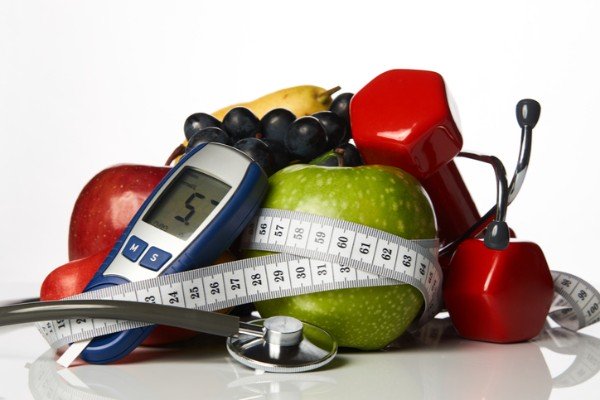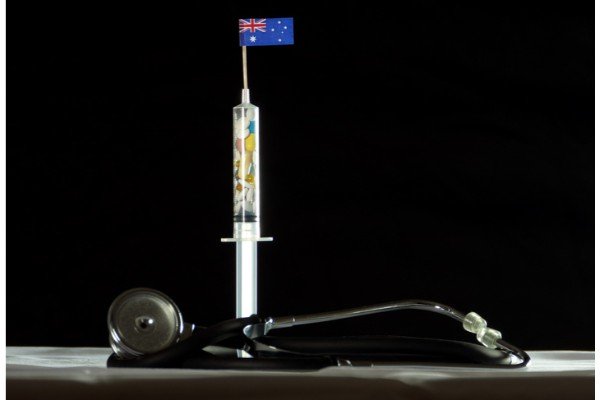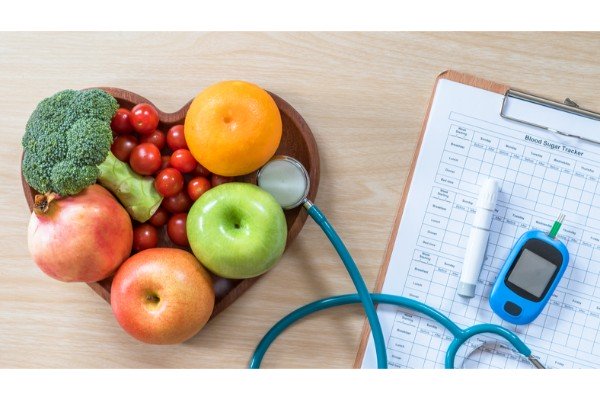The history of World Diabetes Day
World Diabetes Day started in 1991 when it was established by the IDF and the World Health Organization (WHO) as the cases of diabetes being diagnosed around the world was increasing rapidly.
Now, World Diabetes Day is commemorated by over 230 IDF member associations across 160 countries and territories while other organisations, companies, healthcare professionals, politicians, celebrities, and people living with diabetes and their families around the world . It is encouraged that this day leads to screening programmes, radio and television campaigns and dedications from sports events.
The date was chosen as it is the birthday of Frederick Banting who, along with Charles Best and John James Rickard Macleod, had the first ideas that led to the discovery of insulin in 1922.

When is World Diabetes Day and what is it about?
World Diabetes Day is held on November 14 each year.
The IDF will introduce a new theme every World Diabetes Day focuses and as Type 2 Diabetes is very much preventable and treatable awareness alone is enough to combat the disease. Type 1 Diabetes is not preventable but can be easily managed with insulin injections. The themes over the years have included diabetes and human rights, diabetes and lifestyle, diabetes and obesity, diabetes in the disadvantaged and the vulnerable, and diabetes in children and adolescents.
What themes has world diabetes had over the years?
- 2013: Protect our Future: Diabetes Education and Prevention.
- 2014: Go Blue for Breakfast.
- 2015: Healthy Eating.
- 2016: Eyes on Diabetes.
- 2017: Women and diabetes – our right to a healthy future.
- 2018: The Family and Diabetes
What is diabetes?
Diabetes can be split into two variations, type 1 and type 2.
Type 1 Diabetes
Type 1 diabetes is an auto-immune condition where the immune system is activated to destroy the cells located in the pancreas which produces insulin. It is unknown at this stage what causes this auto-immune reaction. So unlike type 2 diabetes, it is not linked to lifestyle factors. There is no known cure and it cannot be prevented.
Around 10 per cent of all cases of diabetes is type 1 but is one of the most common chronic childhood conditions. The onset is usually abrupt and the symptoms very easy to see which include excessive thirst and urination, unexplained weight loss, weakness and fatigue and blurred vision. Despite no known cure, it can be managed with insulin injections. But this process needs to happen several times a day or the use of an insulin pump.
The pancreas is a large gland behind the stomach and with diabetes type 1, it stops making insulin because the cells that make it have been destroyed by its own body’s immune system. Insulin is what the body turns to glucose (sugar) and then into energy. Hence being lethargic and low energy are a huge warning sign.
Without insulin, the body will burn its own fats stores as a substitute which then releases chemical substances in the blood. Without insulin, these dangerous chemical substances can accumulate and this is life threatening if it is not treated. This is condition is known as ketoacidosis.
People with type 1 diabetes must test their blood glucose levels several times throughout the day and the onset of type 1 diabetes occurs most often in people under 30 years.
The people most likely to contract type 1 diabetes usually have a strong family link ie it’s genetic. While a healthy lifestyle can’t prevent it, maintaining a healthy lifestyle is crucial in helping to manage type 1 diabetes.

Type 2 Diabetes
Type 2 diabetes is when the body becomes resistant to the normal effects of insulin and can gradually lose the capacity to make enough insulin in the pancreas. Technically, it is not known exactly what causes type 2 diabetes, but it is associated with unhealthy lifestyles. Like type 1, type 2 diabetes also has strong gene and family related links as well.
Type 2 diabetes counts for around 85–90 per cent of all cases of diabetes and usually develops in adults over the age of 45 years. However, with younger age groups adopting poor lifestyle choices in the 21st century, it’s increasing rapidly amongst them. It is more likely for people with a family history of type 2 diabetes or even from certain ethnic backgrounds.
Unfortunately the first sign of type 2 diabetes can be something sever such as a heart attack as well as vision problems or a foot ulcer.
Even if poor lifestyle choices led to diagnosing type 2 diabetes, it can be managed by increasing regular physical activity, healthy diets and bodyfat reduction. Still, most sufferers will also need oral medications and/or insulin injections in addition to these changes.
While symptoms can be abrupt and sudden, type 2 diabetes develops over several years. The insulin becomes increasingly ineffective at managing the blood glucose levels gradually.
In most cases, by the time someone is diagnosed with type 2 diabetes, they have already lost 50 – 70% of their insulin producing cells. So while people refer to type 2 diabetes as a progressive condition, this doesn’t take into account the ongoing destruction of insulin producing cells in the pancreas.
According to Diabetes Australia, people who are at a higher risk of getting type 2 diabetes usually:
-
-
- have a family history of diabetes
- are older (over 55 years of age ) – the risk increases as we age
- are over 45 years of age and are overweight
- are over 45 years of age and have high blood pressure
- are over 35 years of age and are from an Aboriginal or Torres Strait Islander background
- are over 35 years of age and are from Pacific Island, Indian subcontinent or Chinese cultural background
- are a woman who has given birth to a child over 4.5 kgs (9 lbs), or had gestational diabetes when pregnant, or
- Symptoms of type 2 diabetes include:
- Being excessively thirsty
- Passing more urine
- Feeling tired and lethargic
- Always feeling hungry
- Having cuts that heal slowly
- Itching, skin infections
- Blurred vision
- Gradually putting on weight
- Mood swings
- Headaches
- Feeling dizzy
- Leg cramps
-

How many people have diabetes in Australia?
Diabetes is considered one of the biggest health problems of the 21st century and is a massive strain on Australia’s health system. It’s estimated that around 1.7 million Australians have diabetes. This includes all the known types of diagnosed diabetes as well as the undiagnosed type 2 diabetes which experts believe to be around the 500,000 mark.
Statistically, 280 Australians develop diabetes every day, that’s one person every five minutes! It is the fastest growing chronic condition in Australia with more than 100,000 Australians developing diabetes in the past year
For every person that is diagnosed with diabetes, there is usually also a family member or close friend who also ‘lives with diabetes’ every day. Over 2.4 million Australians are estimated to be affected by diabetes every day. Put simply, diabetes is a huge issue in our country and needs to be addressed.

Schools get increase of diabetes education funding
In September 2018, a new diabetes in schools education and training program was introduced make it easier for teachers and staff to support children suffering with type 1 diabetes as well as giving their parents confidence that their children are safe and supported when they go to school.
Minister for Health, the Hon. Greg Hunt MP, announced $6 million over two years to develop and deliver the program through the National Diabetes Services Scheme. This funding goes towards a nationally consistent training program for teachers and school staff who have a student with type 1 diabetes. The course covers the safe administration of insulin, hypoglycemia (low blood glucose level) management as well as “normalising” diabetes in schools so the students are not stigmatised.
This program will also clarify the legal framework for diabetes management in schools in the case of an emergency as previously cases saw much confusion about who can train school staff and which school staff should be trained to deal with it.
Diabetes Australia CEO Professor Greg Johnson said parents and diabetes services were delighted with the funding for the new program which will reduce stress on both parents and teachers, leaving schools and students to get on with the job of learning.
“Schools, teachers and school staff have been doing a good job with the resources and training currently available but it is clear they need more structured support and a nationally consistent framework,” Professor Johnson said of the funding.
“Too often we hear that the child has to miss their lunch time dose of insulin because no one is confident to give the injection
“Type 1 diabetes is a serious and complex condition requiring round-the-clock management, monitoring and support – including while at school – and this program will give teachers and school staff the skills, knowledge and confidence necessary to support the kids.”
Diabetes and its link to heart disease
If someone with type 2 diabetes contracts heart disease, it shortens their lives by about a decade. Heart disease is the major cause of death in people with diabetes.
A study by Dr Kwok Leung Ong, from the University of NSW is currently trying to develop a way to identify people with type 2 diabetes who are most likely to develop heart disease. This can help health professionals target preventive lifestyle interventions and/or treatments which can help lower their risk.
The study targets lipoproteins that transport cholesterol in the blood. In particular molecules within these lipoproteins.
For more info on Dr Ong’s research, click here.

Foods to stay away from to avoid diabetes
-
- Soft drink
Sodas and even most sweet drinks such as iced tea and milk drinks are high in sugar, specifically fructose. This can cause insulin resistance and an increased risk of obesity, fatty liver and other diseases, namely diabetes.
- Soft drink

-
- White breads, rice and pastas
White bread, rice and pasta are high in high GI carbs and are highly processed foods. Refined-flour foods significantly increase blood sugar levels, especially in people with type 1 and type 2 diabetes. High fibre, low GI and whole grain versions are much healthier and best for diabetics.
- White breads, rice and pastas

-
- Flavoured yoghurts
Plain yoghurt (especially Greek varieties) are great for diabetes, however be sure to avoid flavoured varieties which can be loaded with sugar. Same goes with frozen yoghurts. They’re often no better than ice cream. - High Sugar Cereals
Many breakfast cereals are marketed to be healthy, but really aren’t. Be wary of those with high sugar content and many provide little nutrition. Look at changing your breakfast to something a little more nutritious like avocado and tomato on wholegrain toast.
- Flavoured yoghurts

-
- Ice Coffee Drinks
Coffee as a raw product has some great health benefits, including a reduced risk of diabetes. But most coffee drinks are loaded with sugar. Plain coffee or espressos are a much better option.
- Ice Coffee Drinks

-
- Honeys and Maple Syrup
Syrups are often used as sugar substitutes, but the fact is most of the time you might as well just put the white stuff in anyway. Natural low-carb sweeteners like Manuka honey is a better alternative. - Dried Fruits
Fresh fruit is a great way to get important vitamins and minerals, including vitamin C and potassium, into your body. However, when fruit is dried, the process results and the loss of water makes the sugar content higher. So gram for gram, fresh fruit is much healthier. The best fruits to eat fresh include berries and apples. - Snack foods out of a packet
Basically if it comes out of a packet, it’s not going to be good for you. Be it pretzels, crackers and crisps, packaged foods aren’t good for your health or preventing diabetes. - Fruit Juice
Many believe fruit juice to be a healthy drink, but its sugar content is often similar to soft drinks
This goes for unsweetened 100% fruit juice, as well as types that contain added sugar. In some cases, fruit juice is even higher in sugar and carbs than soda. Some lemon or lime juice in water is much better if you’re looking for a drink with a bit of taste.
- Honeys and Maple Syrup

-
- Deep fried foods
It’s pretty well known that if it’s cooked in the deep frier, it’s not going to be healthy. Even if it’s a vegetable like a potato. Potatoes themselves high in high GI carbs and should be limited in all forms.
However, once they’ve been peeled and fried in vegetable oil, potatoes may do more than spike your blood sugar.
Deep-fried foods have high traces of toxic compounds like AGEs and aldehydes, which may promote inflammation and increase the risk of diseases such as diabetes. Some oven baked sweet potatoes are much better for you than French fries.
- Deep fried foods


